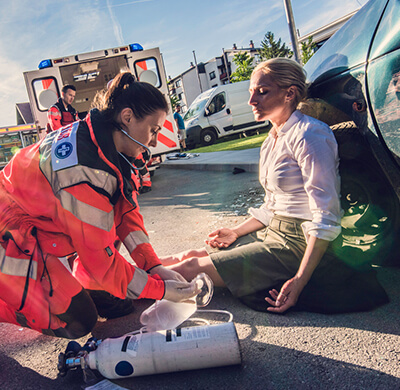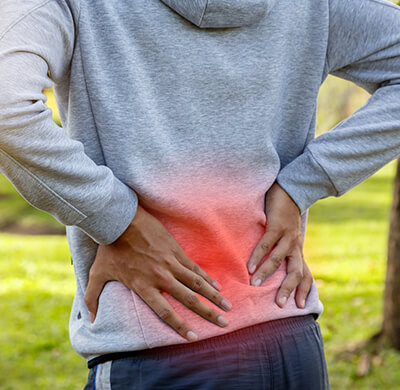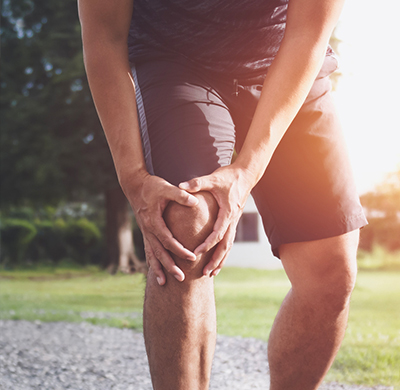Welcome to the Patient Education Library of Texas Medical Institute
Hand Nerve Injury and Repair
Introduction
Nerve injuries in the hand can result from cuts, pressure, stretching, or crush injuries. An injured nerve cannot transmit nerve signals. An injured nerve can cause a lack of sensation, movement, or both. Some types of nerve injuries may heal on their own. More severe nerve injuries require surgical repair.Anatomy
Nerves transmit messages between your body and brain. Nerves are made of cells called neurons. A neuron contains a cell body, dendrites, and an axon. Dendrites receive information from other cells and transmit the information to the cell body. The axon carries messages away from the cell body. Many of your nerves are covered by a protective myelin sheath.Motor nerves transmit messages from your brain to your muscles. They carry messages to your hand muscles to make your hand move. Sensory nerves carry information about pain, pressure, and temperature. They carry messages from your hand to your brain. The main nerves in the hand are the radial nerve, median nerve, and ulnar nerve.
The radial nerve supplies sensation to the area on the thumb side of the back of your hand. The radial nerve controls movements in the muscles on the back of your arm and forearm, which are mainly extensors. A branch of the radial nerve, the posterior interosseous nerve, controls extension movements in your wrist, fingers, and thumb. You use your extensor muscles to raise your hand up and straighten your fingers. The radial nerve also controls the main muscle/tendon that extends the thumb.
The ulnar nerve supplies the sense of feeling to the outer half of your ring finger, your little finger, and the little finger side of your hand. The ulnar nerve sends messages to the interosseous muscles in your hand that move your fingers together and apart. Other functions of the ulnar nerve include bending the fingers at the knuckles and via the adductor pollicis muscle, moving your thumb back towards your hand. These hand and finger movements are especially important for manipulating and holding objects.
The median nerve supplies the sense of feeling in your thumb, index finger, middle finger, half of the ring finger, and the palm side of your hand. It also sends messages to the thenar muscles that move the thumb away from the palm (opposition). You use the thenar muscles to position your thumb to grasp and hold objects.
Symptoms
Nerves are fragile. Nerves are most frequently injured on the dominant hand. An injured nerve cannot transmit nerve signals. An injured nerve can cause a lack of sensation, movement, or both. More men experience hand nerve injuries than women. Ulnar and radial nerve injuries in the finger are the most common type of hand nerve injury.Cuts, pressure, stretching, or crush injuries can injure the nerves in the hand. These types of injuries result most frequently from falls, vehicle crashes, gunshot wounds, and other sources of physical trauma. Burns, freezing temperatures, electrical shock, radiation, and vibration can also cause hand nerve injuries.
Pressure or stretch injuries can cause the nerve to break, but the myelin sheath may remain intact. If the myelin sheath remains intact the nerve may grow and repair itself correctly. Cut injuries can sever both the nerve and the myelin sheath. A separated nerve needs surgical repair to grow correctly. If left untreated, nerve fibers may grow into a ball at the end of the cut forming scar tissue or a neuroma. A neuroma can be very painful.
Diagnosis
Your doctor can diagnose a nerve injury by reviewing your medical history and conducting an examination. You should tell your doctor about your symptoms and injury. Your doctor will test each of your nerves individually to determine the level of your nerve injury and if a nerve is partially or completely separated.Your doctor will test the sensation, strength, and range of motion in your hand. A Tinel’s test helps locate the place where your nerve is injured. Your doctor will tap your nerve. You will feel a sensation when the tip of the severed nerve is tapped.
A wrinkle shows the areas of your hand that has nerve conduction. Your hand will be placed in water. Your skin will wrinkle where the nerves are working. Your skin will not wrinkle where the nerves are not working.
Monofilament and two-point discrimination tests help your doctor map where you have sensation or not. Your doctor will randomly place thin fibers against your skin. You will report when you feel the filaments. In some cases, further tests may be ordered to help determine the type and extent of the nerve injury.
Nerve conduction studies measure how well a nerve works and help specify the site of injury. Doctors commonly use a nerve conduction velocity (NCV) test. During the study, a nerve is stimulated in one place and the amount of time it takes for the message or impulse to travel to a second place is measured. Sticky patches with electrodes are placed on your skin that covers the nerve. The NCV may feel uncomfortable but only during the actual test.
An electromyography (EMG) test is a test often done at the same time as the NCV test. An EMG measures the impulses in the muscles to identify poor nerve input. Healthy muscles need impulses to perform movements. Your doctor will place fine needles through your skin and into the muscles that a nerve controls. Your doctor will determine the amount of impulses conducted when you contract your muscles. The EMG may be uncomfortable and your muscles may remain a bit sore following the test.
Your nerve injury will be classified depending on the severity of your injury. For instance, first degree nerve injuries only affect the myelin sheath that surrounds the nerve. In contrast, fifth degree nerve injuries are the most severe. Fifth degree nerve injuries describe a nerve that is completely separated.
Treatment
Nerve injuries classified as first to third degrees may heal on their own. Fourth and fifth degree injuries require surgery. Nerves cut or severed by a sharp object can be operated on immediately. Nerve injuries from other causes, such as crush injuries, may have a short waiting period before surgery to allow the nerves and tissues to start the healing process. Generally, better results follow early nerve repair. However, nerve surgery criteria are strict, and in cases of catastrophic injury, a person needs to be medically stable before surgery can take place.Surgery
There are many types of surgeries for nerve repair in the hand. The type of surgery that you receive depends on many factors including the degree of injury and the size of the gap between separated nerve ends. Based on your injury, your doctor will determine when to perform your surgery and what type of repair to perform.When a nerve separates, the end that is farthest away from the brain begins to die. The nerve ending closest to the brain undergoes changes and prepares for regrowth. A nerve can regrow but in some cases it may need assistance to bridge the space to meet the other nerve ending. End-to-end approximation, grafting, and conduits are surgical methods to bridge the gap between two nerve ends.
End-to-end approximation procedures involve carefully stitching the two endings of a severed nerve together. This is the most favorable type of surgery. End-to-end approximation is most appropriate for nerve endings cut with a sharp object and have a small gap.
Nerve grafting may be necessary for nerve injuries that have a large gap. This can occur with crush or burn injuries. For this procedure, a nerve section is harvested from another place in the body then stitched to the injured nerve endings to bridge the gap.
Conduits are tissues used to bridge the gap between two nerve endings. Conduits can be pieces of arteries, veins, muscle, or synthetic substances. A conduit bridges the gap between two nerve endings when neural tissue is not available.
Recovery
Following surgical nerve repair, your hand will be immobilized with a splint. You will also begin hand therapy rehabilitation. The goal of hand therapy is to improve the blood flow, movement, and muscle tone in your hand. You will continue to wear your splint for several weeks and gradually increase hand use. Continued hand therapy rehabilitation will focus on improving your hand function and sensation.Your doctor will closely monitor your progress while you heal. Nerves grow slowly, at a rate of about an inch per month. Recovery time and the degree of recovery are different for everyone. It depends on many factors including your age, the degree of nerve injury, and the location of injury. Your doctor will let you know what to expect.

Copyright © - iHealthSpot Interactive - www.iHealthSpot.com
This information is intended for educational and informational purposes only. It should not be used in place of an individual consultation or examination or replace the advice of your health care professional and should not be relied upon to determine diagnosis or course of treatment.
The iHealthSpot patient education library was written collaboratively by the iHealthSpot editorial team which includes Senior Medical Authors Dr. Mary Car-Blanchard, OTD/OTR/L and Valerie K. Clark, and the following editorial advisors: Steve Meadows, MD, Ernie F. Soto, DDS, Ronald J. Glatzer, MD, Jonathan Rosenberg, MD, Christopher M. Nolte, MD, David Applebaum, MD, Jonathan M. Tarrash, MD, and Paula Soto, RN/BSN. This content complies with the HONcode standard for trustworthy health information. The library commenced development on September 1, 2005 with the latest update/addition on February 16, 2022. For information on iHealthSpot’s other services including medical website design, visit www.iHealthSpot.com.






